Basic AI Chatbot Pricing: A simple chatbot that can answer questions about a product or service might cost around $10,000 to develop.
Read More
In the modern world, people utilize the internet when searching for real estate properties in the market. In fact, 99% of millennials, 89% of baby boomers, and 77% of the silent generation use the internet to search for homes. This statistic highlights why property listing visuals matter, where virtual staging comes into the picture.
Virtual staging AI is also less expensive than conventional staging, which is an expensive process that may require thousands of dollars. Affordably, the virtual staging prices start at $39-199/month, depending on the number of the staged properties. Thus, it is more effective for architects.
Moreover, it is also a lot faster with the staged images taking between 24 to 48 hours, maximum. This helps the architects in the presentation of their design, hence increasing the rate of marketing of real estate.
As part of their endeavors, architects work with an AI software development company to integrate sophisticated AI solutions, that ease the design and staging of buildings. The type of technological blend applied here keeps architects competitive, while at the same time ensuring they are not overburdened with too much work to do.
Moving forward, let’s discuss the use of virtual staging tools in the context of architects.
Here are the primary benefits that architects can seek while leveraging virtual staging AI tools:
Virtual staging is a more cost-effective way of staging as compared to physically arranging furniture, and other items in a house. For instance, architects can work closely with real estate firms that implement AI real estate solutions to design better-looking spaces as efficiently as possible, and with little expenses.
Depending on the specific project, changes can be made within 24-48 hours, allowing architects to incorporate the feedback of their clients without delays. Generative AI in real estate can enable prompt generation of various layouts.
The benefit of virtual staging AI is that it can be adjusted to include architectural designs of choice furniture and fixtures, and give the client a clear view of what the interior will look like.
Interior designers, architects, and real estate agents can combine their efforts more efficiently through websites like Styldod. When integrated with AI tools designed for architecture, it becomes easy to collaborate on designs and staging them.

Now, it is absolutely relevant to know the criteria for selecting the best tool when you are exploring multiple tools for virtual staging:
Generally, architects are always under certain time constraints, therefore the tool should not take a lot of time to learn or use.
It should be possible to include additional furniture, doors, accessories, and others, similar to the style of the project an architect is working on. Various AI tool for architecture design platforms tend to offer custom designed solutions.
Another factor is money and the need to find good bargains or affordable prices. Prices should also correspond to the projects, suggesting various types of packages, valuable for various aims.
Speed is also an important factor to consider since in many situations, a quick turnaround is desirable. Techniques capable of providing architects with staged images within 24 – 48 hours of work are ideal to help the architects meet the project timeline.
Architecture-related applications like CAD and BIM, when synchronized with other old tools will improve the flow of work. AI integration services also have an important function to perform regarding the effective interaction between different platforms.
Here is a list of top 10 virtual staging AI tools for architects. You can shortlist any one of these, depending on the criteria discussed before:
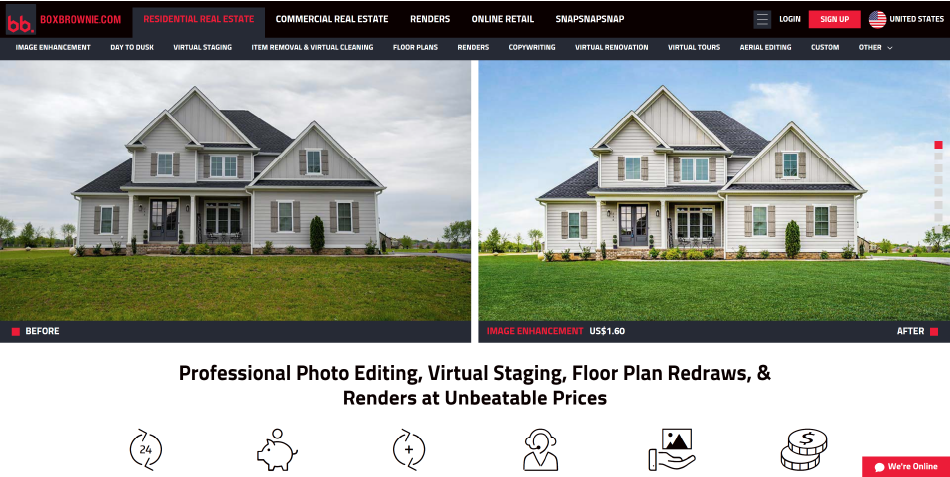
With BoxBrownie, one can have virtual staging, photo editing, 360° tour, and virtual renovation services. Praised for the low price and short duration (48 hours), it has become the architects’ go-to option for staging properties promptly and cheaply.
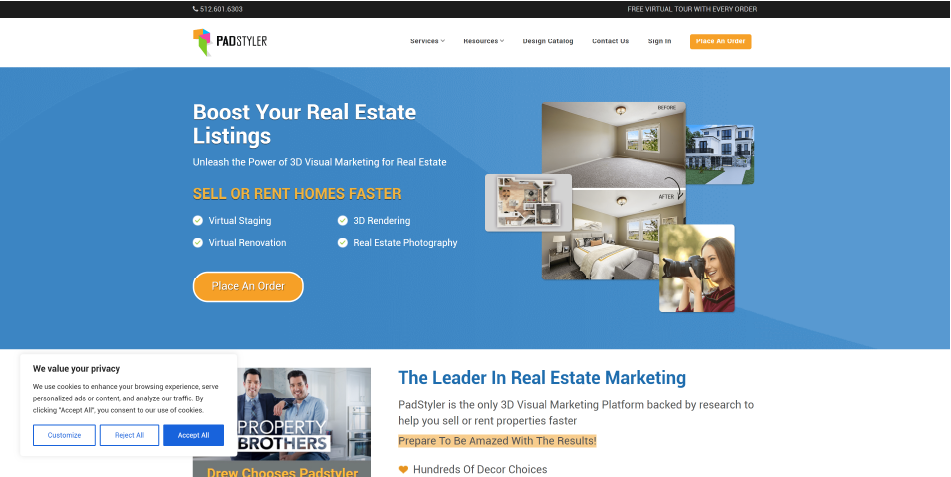
This software is ideal for architects since it focuses on staging, remodeling, and changing furniture in a home. It has hundreds of decor options and is ideal for realistic staging. This tool can be integrated with real estate chatbot solutions to provide a seamless client experience.
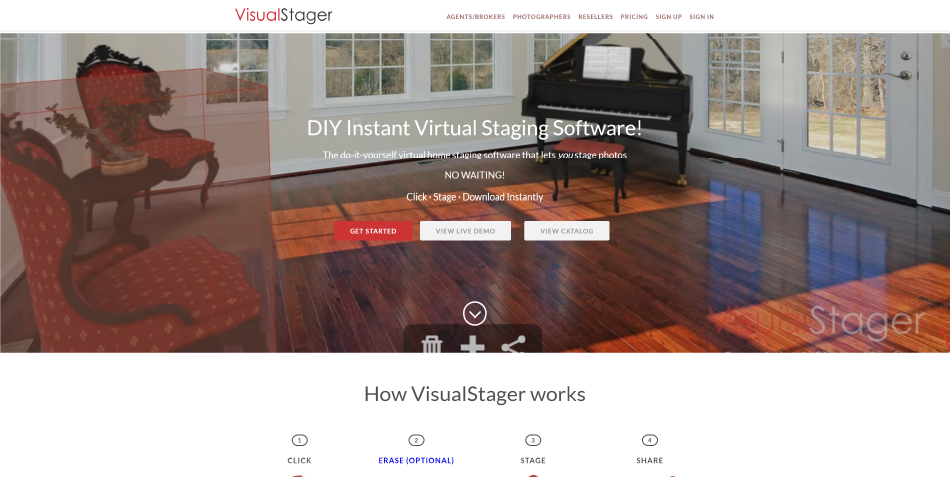
Architects can simply drag furniture onto images of rooms and spaces. As such, it is cost-effective and easy to use, which is ideal especially for the do-it-yourself clients. It complements real estate chatbot development to optimize client interactions.
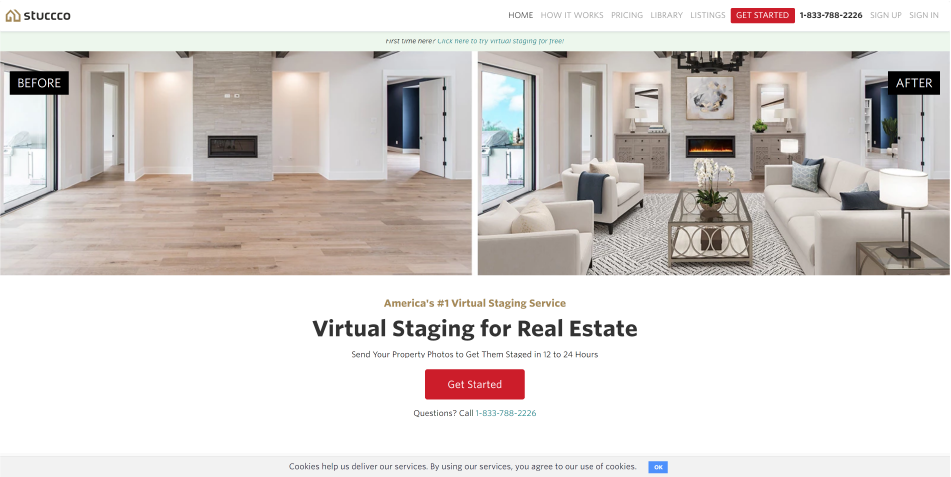
With a service that takes 24 hours to complete and a reasonable fee for professional virtual staging, this tool is highly favored for its customization features .
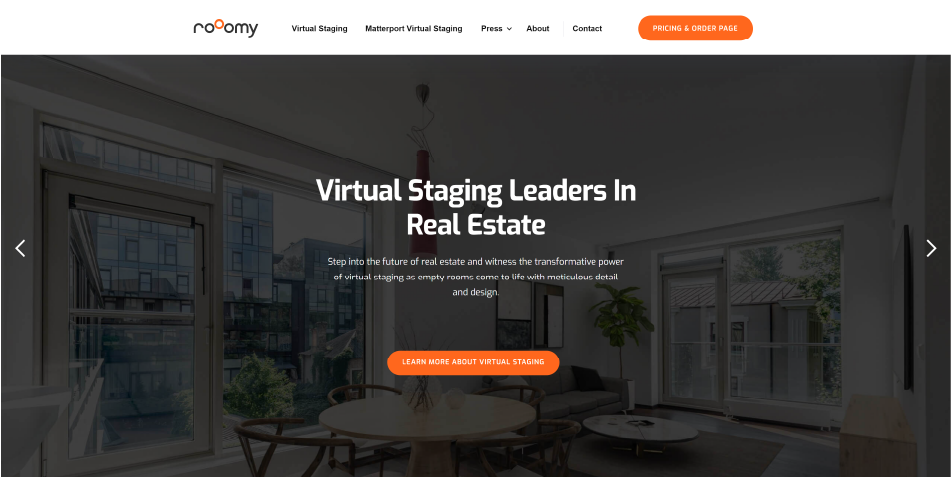
This is great for 3D rendering, with the added function of virtual staging, which would benefit architects and their clients who want photorealistic renderings.
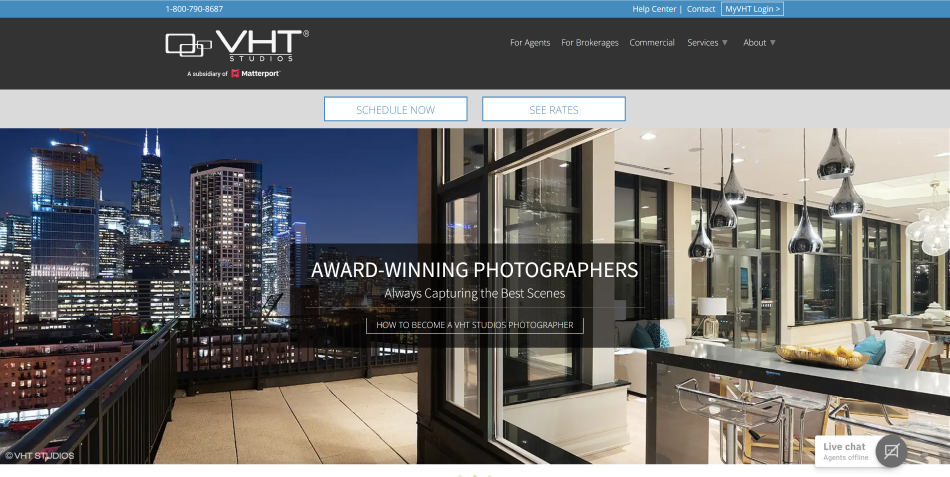
This tool offers advanced virtual staging solutions with realistic imagery optimized for visualizing architectural concepts. It is especially applicable to luxury facilities.

Apart from providing a platform for models created by architects, modelers, and designers, Turbosquid boasts of a decor and furniture product library with extensive models that can help architects in staging, architectural visualization, etc.
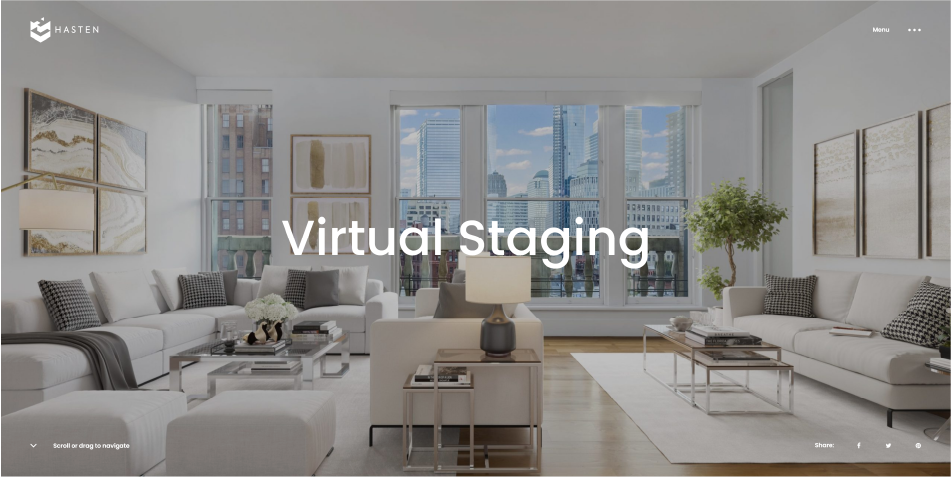
It is a plethora of luxury virtual staging solutions, that offers realistic renderings for architectural projects and developers.
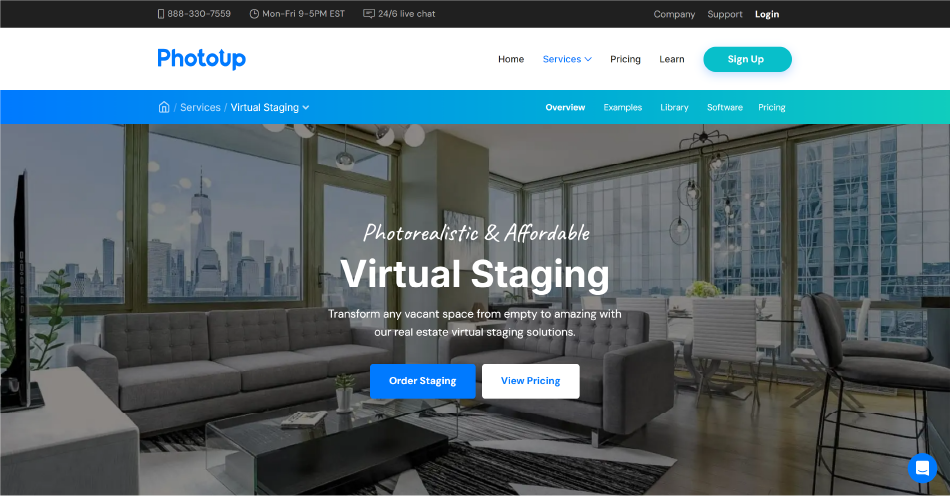
PhotoUp offers fast and cheap virtual staging AI service, starting at just $20 per image. It also includes other services such as virtual decluttering and repairs.
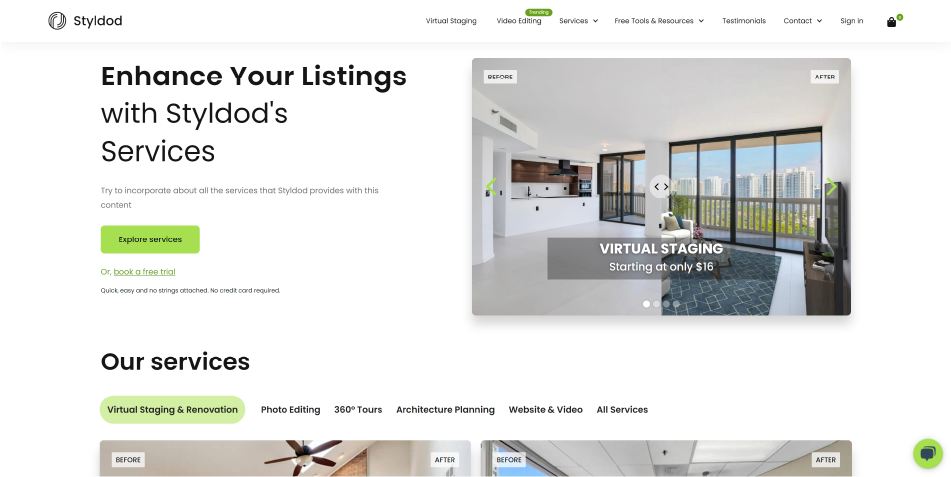
It is designed for real estate businesses, Styldod provides virtual staging for $90 with unlimited changes and 1-day turnaround. This is most suitable for architects who require service delivery as fast as possible, but with high quality.
The appearance of AI real estate marketing solutions has affected the way how architects promotes the property staged for selling. Thus, the application of AI can help architects study the condition of properties and preferences of potential buyers, while making sure that their architectural creations satisfy customers’ needs.
AI systems have the capability to give information about which staging styles are most likely to appeal to particular groups of people.
For instance, Styldod and RoOomy are tools that enable architects to stage the properties under consideration in relation to buyers’ profiles to bring out essential aspects. This way of working makes a lot of sense for architects, competing for highly valuable and appealing properties to stage.
Due to the increased awareness of sustainable architecture, architects utilize AI, as a tool that assists them when designing sustainable designs. AI real estate solutions like PadStyler and BoxBrownie can recommend eco-friendly reality decor ideas and viable designs, conforming to green building principles.
This makes it possible for the architects to demonstrate their compliance with the sustainable design concept, and at the same time, the prospective buyer gets an aesthetically appealing and sustainable building.
Virtual staging AI tools can also be used to draw attention to such features as smart home devices, eco-friendly materials, and environmentally friendly landscaping, that may attract those concerned with environmental issues.

Now, it is the right time to discuss about the future scope of virtual staging AI tools in architecture:
Virtual staging tools will progress toward suggesting designs that incorporate aspects of AI backed up by an analysis of style, trends, and clients. The use of generative AI in real estate will lead to different variations of designs that architects can evaluate in real-time.
When combined with Virtual Reality and Augmented Reality, more than simple 2D images will be used in virtual staging to provide clients with fully 3D first-person experience. It will be possible for architects to demonstrate the appearance of interiors in real-time effectively staging homes virtually.
In the future, further advancements in AI will lead to the automation of placing furniture in staged rooms, thus enhancing the speed of designing. This will help architects to work more efficiently without compromising the quality of the interiors of each specific area.
AI tools are going to propose green materials and furniture in accordance with the set objective of the project. With increased focus on sustainable construction, AI will assist architects in synchronizing simulated visualization to green building initiatives, enhancing the efficiency of whole building designs.
AI in real estate investing will have a more significant role in delivering detailed information to the architects. These tools will provide more insights on clients’ preferences, and overall trends as architects seek to stage properties online, to attract those likely to buy or rent.
with Biz4Group today!
Our website require some cookies to function properly. Read our privacy policy to know more.